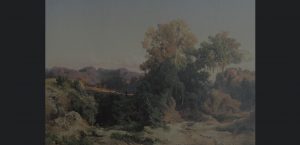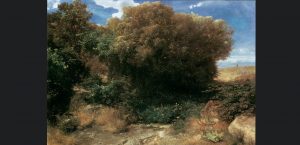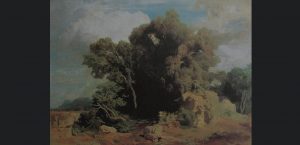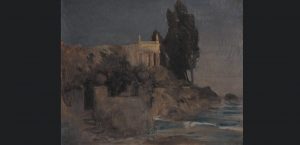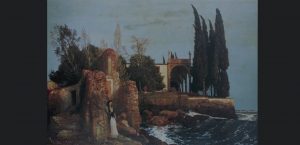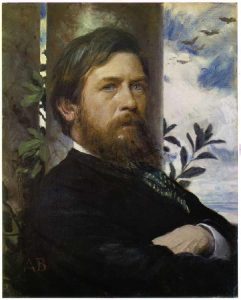Arnold Böcklin was born on the 16th of October in 1827 in Basel, Switzerland.
1827 - 1901
Arnold Böcklin
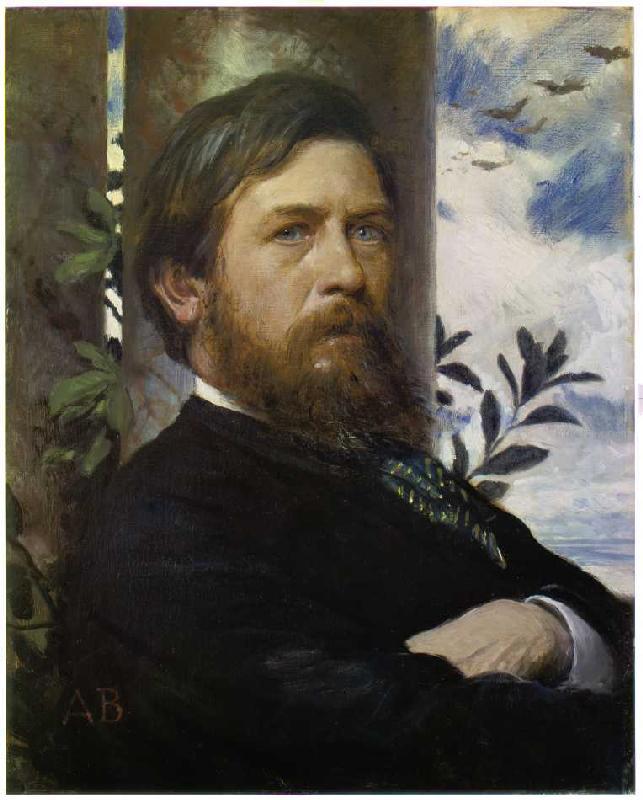
description
A Swiss painter, graphic artist and sculptor. The representative of the Dusseldorf School of Art. One of the outstanding founders of Symbolism in European visual art, the author of the very famous painting “The Island of Death”.
The works of Böcklin, in the words of the master himself, “encourage thinking”. However, not complicated intellectuality and speculative secrecy of feelings, but emotionality is the basis of the ideas of the author, a true romantic of the spirit. That is why the art of Arnold Böcklin turned out to be close to the masters of Symbolism, who singled out this facet of Böcklin’s talent.
Key ideas:
– Pictures by A. Böcklin, bright and sometimes sharply contrasting in color, present a fictional world, often too much, in other words, deliberately mysterious to the viewer.
– The main advantage of the canvases is their color, not deprived of some eccentricity, bold for those times.
– Initially having devoted himself to landscape theme, Böcklin soon puts compositions, mostly mythical, to the forefront of compositions. Böcklin perceives all the bright culture of his favorite Italy as a classical myth that nourishes the imagination of the creator. Thus, real landscapes and muses, Venus, ancient heroes, as well as less harmonious, but more mysterious creatures, naiads, tritons, centaurs, begin to coexist on the canvases. At the same time, the viewer feels the complete unity of the nature and fiction.
– The theme of solitude, often fatal, characteristic of most of the Symbolists, sounds in its full force in many plots of Böcklin. First of all, in the famous canvas “The Island of the Dead”, which the author repeated five times, changing the tonality and lighting effects. In this painting, everything is symbolical, not only the image of a detached island – the presence of “trees of sorrow” (cypress trees), an abandoned deserted villa, a boat with a figure in white clothes.
– The spirit of exclusivity, the romantic elevation of feelings over prose is inherent in the self-portraits of Böcklin. These canvases are “directed” very effectively, and are very expressive in color combinations. This, on the one hand, involuntarily makes us think about the self-portraits of Van Dyck and Rembrandt, and on the other, to relate them to the self-portraits of S. Dali. In every image (near a tree, with a glass of water, or with a violin of death), an emotional beginning is always revealed. Despite the soundness of the composition, it has the nature of a certain improvisation subordinate to the master’s vision.
1827
1845 - 1848
1850 - 1857
1857 - 1860
1860 - 1862
1867 - 1877
1880
1886
1894
1901
The birth of the artist
Studied at the Academy of Fine Arts in Düsseldorf
Studied at the Academy of Fine Arts in Düsseldorf with painter and sculptor Hildebrandt and master of the landscape Schirmer, then with the landscape painter Calame in Munich; met a philanthropist and collector, Count Shaq.
Worked in Rome
Worked in Rome. Italian impressions became decisive in his work; in 1853 – Happily married a 17-year-old Italian woman there (out of 14 of their children, six survived).
Lived and worked in Basel and Munich
Lived and worked in Basel and Munich.
In Weimar, he worked as a professor at the Higher School of Art
In Weimar, he worked as a professor at the Higher School of Art (Academy).
Made a long trip to Italy
Made a long trip to Italy.
Created five variants for the theme "Island of the Dead"
Created five variants for the theme “Island of the Dead”.
Started living and working in Zurich
Started living and working in Zurich.
Moved to the neighborhood of Florence
Moved to the neighborhood of Florence, lived in his villa near Fiesole until the end of his life.
The Death of the artist
He died on the 16th of January in 1901 in San Domenico di Fiesole, Florence, Italy.


